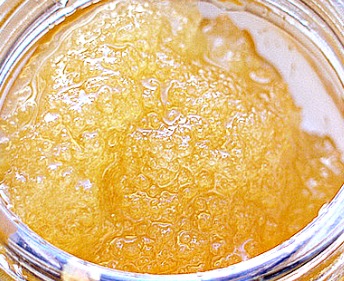Honey: F.A.Q.
Why does my honey crystallise?
Every honey type will crystallise over time. This is mainly due to the natural sugars in the honey, so it is unrelated to quality or shelf life.
To liquefy the honey: place the jar in warm water (max 40-55°C) for 15 minutes. Never heat the honey in a microwave to avoid breaking down the important components such as enzymes, vitamins and amino acids.
My honey is too hard, how do I make it easily spreadable?
Keep the jar at room temperature, or even a bit warmer (max. 25°C).
How do I best preserve honey?
Pure honey doesn’t spoil. However, it does become increasingly darker over time. The official, legally determined shelf life of honey is 2 to 3 years, though a well-sealed jar can be kept for many years without losing any of the quality or taste.
Why is it bad to heat up honey?
When you heat honey, you essentially destroy the enzyme glucose-oxidase. It is this enzyme that turns into oxygen peroxide, which has an antibacterial effect. Heated honey loses all of its medicinal qualities!
I’m noticing a dark, liquid layer on top of my cream honey?
As time goes by, cream honey begins to “melt”. This means that the top layer of the honey has become liquid. To avoid this for as long as possible, it is best to keep the jar at about 14-15°C. The liquid layer can be removed by simply stirring it into the rest of the honey. The honey is still perfectly edible.
What is the white layer of foam on top of my liquid honey?
This foam is nothing more than air bubbles. Honey contains many air molecules that will rise to the surface over time. Give it a good stir and the honey will be nice and smooth again.
I can see white ice-like spots on the interior side of the jar, what is this?
The cause is the crystallisation of glucose around air bubbels in the honey. The honey is most likely being kept in a space that is too cold. Keep the jar in a warm room, and the white spots will disappear by themselves.
Why shouldn't babies below the age of one eat honey?
Honey is a product that is unpasteurized because this process will have a negative effect on the composition of the honey. In rare cases, this can cause traces of botulism to occur in honey. These traces can be neutralised quite effectively in the body, but very young children haven't built up any resistance against these bacteria. Our honey is randomly sampled for botulism, but our advice remains to withhold honey from children under the age of one, just as a precautionary measure.
What is the difference between solid (cream) and liquid honey?
When honey comes from the hive it is always liquid, yet it will crystallise over time. There are honey varieties that crystallise after only a few weeks, some after a few months, a year, or even longer. It's the amount of glucose in the honey that will determine the fluidity or solidity. The difference between solid and liquid honey is mainly of importance in its use (eg. in hot beverages or on bread), though the colour and taste also differ.
What determines the price of honey?
Honey is considered an agricultural product. Like all agricultural products there are fluctuations in price from year to year. Some years, honey cannot be harvested in certain regions due to weather or death in the colony. Geographical origin and type of honey are also indicative of the price. Flower honey is much more common than melon honey, for example.
I'm allergic to bee stings, am I allowed to use bee venom cream?
When swelling, itchy skin, tingling or a burning sensation occurs and the skin around the sting turns red, this is considered a normal reaction to the sting, not an allergic reaction.
One is allergic to bee stings If, after the sting, a sudden drop in blood pressure occurs, there is an increased heartrate, vomiting, shortness of breath or loss of consciousness.
Even people that are allergic to bee stings are allowed to use bee venom cream. This is because allergic reactions occur when the venom is introduced intravenously, not externally. Of course there is always a possibility that the skin reacts after applying bee venom cream. If the skin does get itchy and turns red, it is best to discontinue use.



